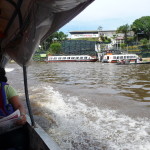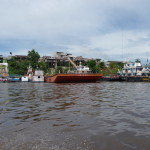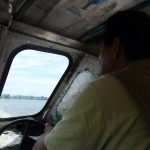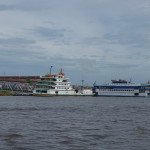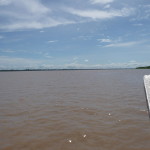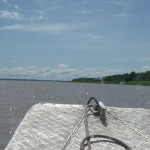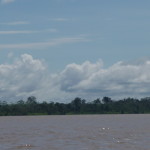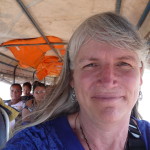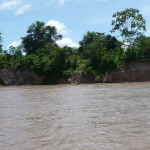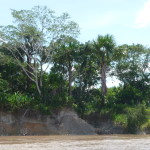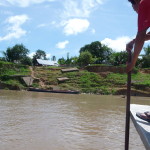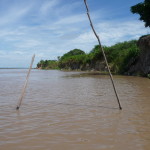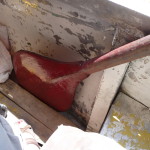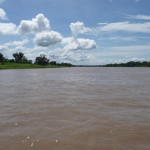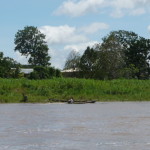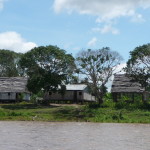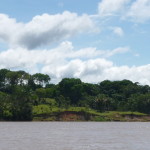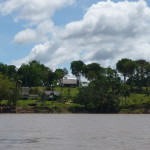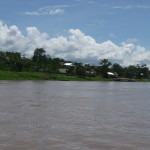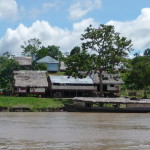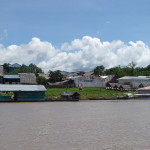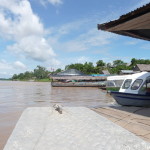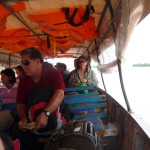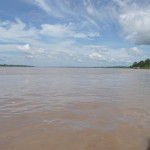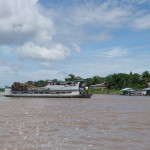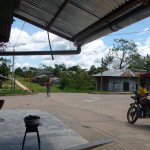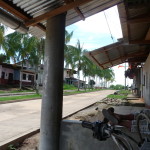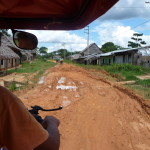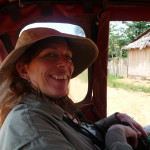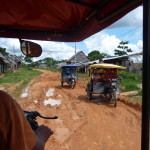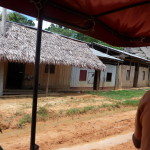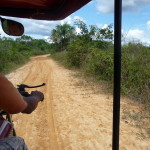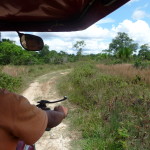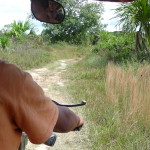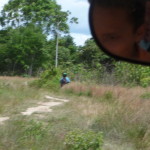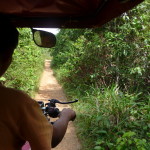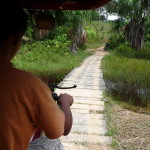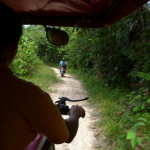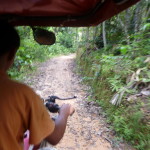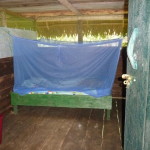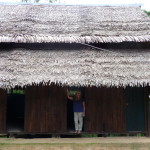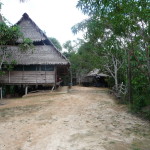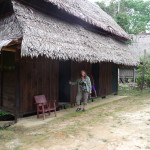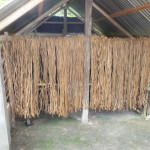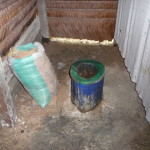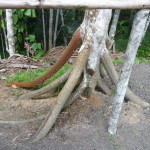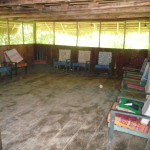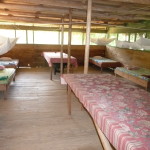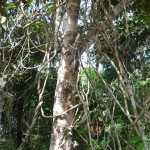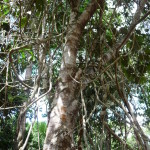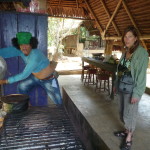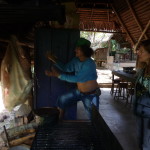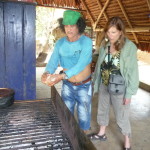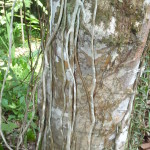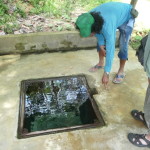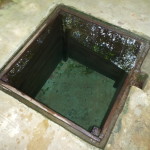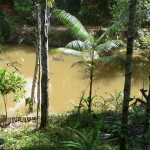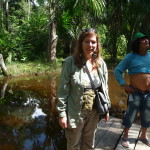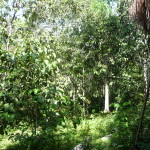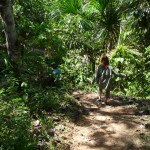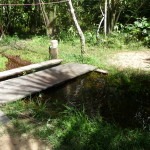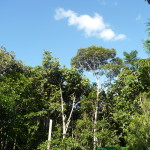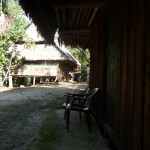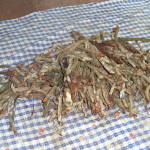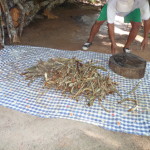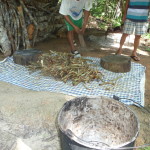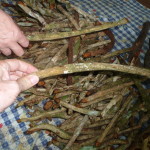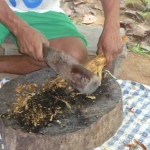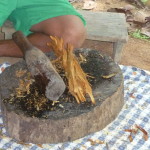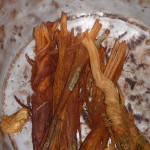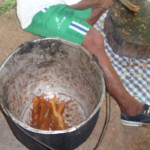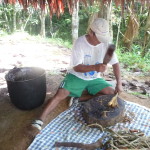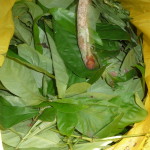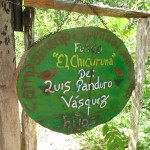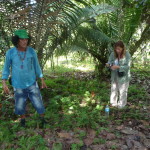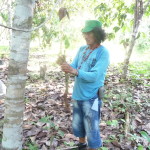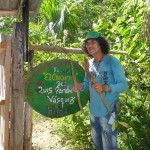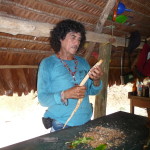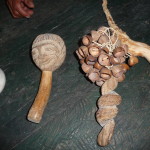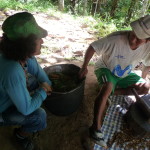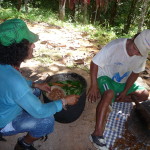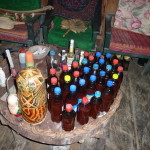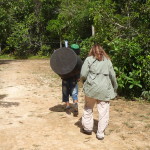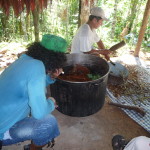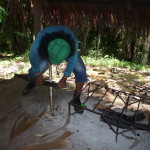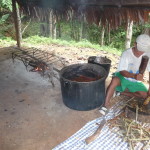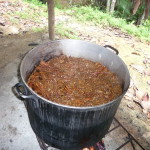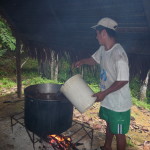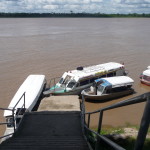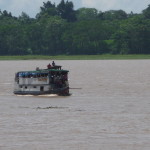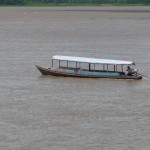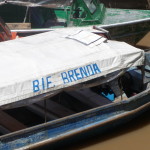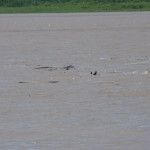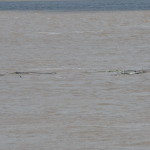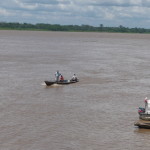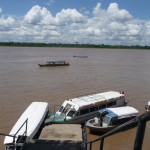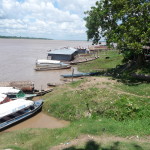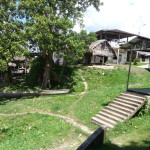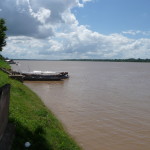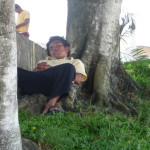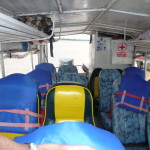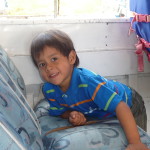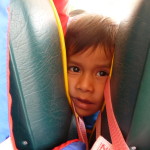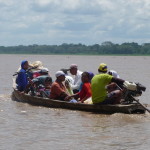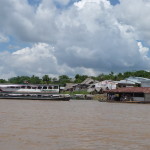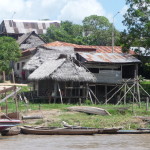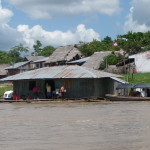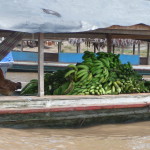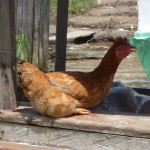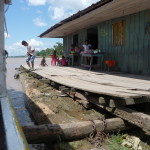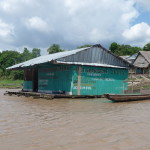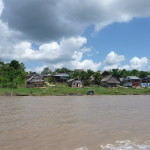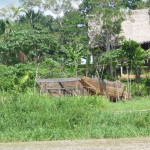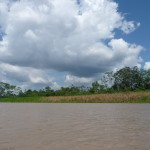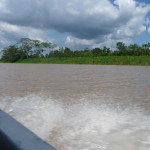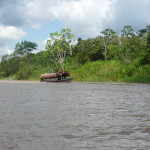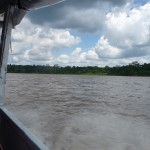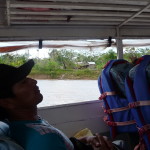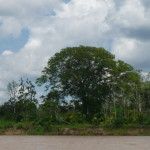On December 18, I traveled up the Amazon river with my friend Judy. She was going to the site of her two-week retreat. I was tagging along for the experience. We took an hour and ten minute speedboat journey up the Amazon to a town called Tamshiyacu.
This post contains 119 photos documenting that overnight journey.
As usual, the photos in this post are thumbnail images. Please click on any photo to enlarge it. The thumbnails leave much to be desired as far as colors and resolution – plus the thumbnails clip all of the edges. I use thumbnails for the post itself, because it gives people an opportunity to get a summary glimpse without downloading huge amounts of data for the high-res photos.
CLICK ON ANY PHOTO TO ENLARGE TO HIGH RESOLUTION
The Amazon River
We took a mototaxi to a small port called “El Hueguito” or “El Iquitos”. When we arrived, we were the last two passengers to squeeze into a crowded 20 passenger speedboat. Within minutes we were rapidly zooming up the Amazon river on a journey that lasted an hour and ten minutes.
Looking out the window as we head out toward the Amazon. I was sitting in the front seat, just left of the driver.
The shoreline in this part of Iquitos is crowded with scenes like this. The only way into Iqitos is via boat or via air. There are no roads (other than a 100 kilometer dead-end road to nearby Nauta).
This is the boat captain. Because of the wind from going quite fast, they close the door on the front of the boat. The sides of this boat were open.
A couple of riverboats parked along the shoreline. My friend Jeanette took a riverboat cruise here about five years ago. I’m guessing it was on a boat like these.
With my head sticking out the window, I took this photo looking ahead as we enter the Amazon river. It is very wide and muddy here. The currents seem to be quite strong along the shorelines. I would guess the flow is at least five or ten miles per hour.
This is the front nose of the boat with the Amazon in the background. It was a very sunny day, and the sun was intense.
Looking at the distant shoreline.
A not-so-beautiful self-portrait. I rarely wear any makeup anymore. It is so nice just to go au-natural.
The current is so strong that it eats away at mud cliffs like this one, causing the river to constantly move and change channels.
More shoreline with beautiful trees.
We dropped one woman off early, letting her out at this small, makeshift dock.
Looking along the shoreline as the woman gets off the boat.
Whenever we approach or leave the shore, the boat assistant uses this oar to push us toward or away from obstacles. He then stows it right beside me.
Another section of the Amazon river.
Some small homes along the way, with a small boat in the foreground.
More homes near the shore. Notice that they are on stilts. I am surprised by how low they are, because I was thinking the water here might get higher than they are. A couple of years ago, the water in Iquitos hit an all-time high, and many shoreline homes were under water.
More beautiful shoreline.
Continuing up the river … more little homes amidst the trees.
Approaching a town. Could it be Tamshiyacu?
Boats like this one are quite common along the river.
A glance at the sign on the middle building reveals that this is indeed Tamshiyacu.
We first stopped to let a few people off at this location.
With fewer people now on the boat, and much less baggage, I was able to turn around and take this photo of Judy (three rows back on the same side as me).
This photo gives a better idea what this boat was like.
Looking back down the river as we prepare for the final minute or two of our journey.
This larger boat was also approaching the town of Tamshiyacu. I understand that this town has about 14,000 residents. It is much larger than it looks.
Once off the boat, we took a mototaxi for about 200 yards, ending up being dropped off here at this little corner store. We were looking for Judy’s Shaman, a man named Don Lucho Panduro. We were told to wait for him here.
That little path on the left goes up into the town of Tamshiyacu.
Looking back down the road in the other direction, back toward the river. Tamshiyacu is a sleepy little town.
Finally, after getting a little lunch at a small comedor (tiny restaurant), Don Lucho set us up with a mototaxi ride out to his “albergue” (or camp).
Judy sitting beside me in the mototaxi as we head off into the unknown.
The first part of our journey took us through very muddy roads in a more populated part of town.
Some very typical homes in this part of the world. Note all the open-air spaces at the top of the walls and windows etc…
Now leaving the populated area and into the countryside.
Little by little, the road narrows and worsens.
Still muddy in places … and very bumpy.
That is Don Lucho in the blue shirt, riding the motorcycle in front of us.
The part of the road was quite nice and well landscaped by mother nature.
Crossing over a little stream on a narrow wooden bridge.
Following Don Lucho, deeper and deeper into the jungle.
We are almost there.
When we arrived, Don Lucho assigned both Judy and I our own little space to spend the night. This is my tiny room with a comfortable mattress and mosquito net.
Me, standing in my doorway. Judy’s room is the open door on the left.
This is one of the buildings on Don Lucho’s property. It is a two-story bunk house, used when he has large groups here.
Judy standing in front of her room. A worker is standing behind her in my doorway.
One of many similar restrooms. The doorway is just hanging strands of long grass.
Inside is a pit toilet.
A nearby tree with fascinating roots.
The inside of Don Lucho’s ceremony space.
Inside the lower level of the large bunkhouse.
All of the vines dangling around this tree are Ayahuasca vines.
Another view of the vines around the tree.
This is Don Lucho, showing Judy something in the kitchen stove area.
I think he was grabbing a handful of small woodchips to use as kindling on the fire.
Don Lucho is like a grown up magical little boy.
More Ayahuasca vines around this tree.
We walked down a small hill to the well. All of our drinking water comes from this spring. It is sparkly clear.
You can see right to the very bottom.
This is a small pond on Don Lucho’s property. He has several “Tambos” (jungle huts for residents) surrounding this little pond. If you look closely, you can see many turtles swimming in the water.
Judy and Don Lucho standing by another pool of water. This one is used for swimming and bathing.
Some of the surrounding trees in this area.
Judy and Don Lucho in front of me, walking down another steep path.
This is the public shower area. The water is very clean here, and flows away from the rest of the camp.
Beautiful trees and blue sky … with a very hot sun.
Back at my room for an afternoon nap and a nighttime ceremony.
After a long night without much sleep, I was fascinated to watch Don Lucho and his staff work on preparing a new batch of medicine.
This is a pile of cut ayahuasca vines, ready to be smashed and boiled into a tea.
The large wooden stump is used as a work space to pound and smash the vines.
All ready to go…
Judy and I each holding a small segment of a vine … showing a little perspective on their size.
Smashing one of the vines.
The vine after it has been smashed and shredded.
Several smashed vines at the bottom of a large pot.
A work in progress.
A tedious and time-consuming job.
A bag of chacruna leaves. These will be added to the medicine mix.
While the worker continues, Don Lucho takes us on another tour of his property, in search of another root. This is a sign at the entrance to Don Lucho’s property. His actual name is Luis Panduro Vasquez.
Lucho and Judy looking at some budding “chiri sanango” roots.
Don Lucho pulled a couple of the roots out of the ground. Here he is cleaning off one of them.
Don Lucho holding two chiri sanango roots by his sign.
We went back to his kitchen area where he washed and then scraped off all of the bark from the roots. Both Judy and I thought he was going to discard the bark and then smash the roots before adding them to the medicine mix.
But instead, we were surprised to learn that it is the scraped bark that is added to the mixture. The roots themselves are discarded.
Two hand-made ceremonial rattles that Don Lucho uses in ceremonies — made from local products. The handle of the one on the right is a piece of ayahuasca vine.
Back to the workspace with a growing pot of vines, leaves, and now the bark of chiri sanango roots.
Here, Don Lucho is adding the chiri sanango bark.
A collection of medicine on Don Lucho’s ceremonial altar.
Carrying a larger pot down to the workspace.
Continuing to add more smashed vines etc. The large pot is getting full.
Don Lucho cutting some small strips of wood for kindling, preparing to start the fire.
Almost ready to add water and cook.
Finally, the medicine tea is cooking.
Adding more water as it cooks down. This tea is often boiled continuously for several days.
After the tea was cooking, I told Don Lucho that I needed to get back to Iquitos. He took me on the back of his motorcycle on our way down to the river. It was a long and bumpy ride.
When we got here, I was told that the boat in the middle would take me back to Iquitos, but that it would be a while before it filled up.
Later, I sat in this boat for more than an hour and a half waiting for others to join me.
Meanwhile, I took photos of things around me. I loved this large boat that passed by on the river. It appears to be quite crowded, kind of like a Guatemalan chicken bus, only this is a “chicken boat.”
Another common type of boat that is seen everywhere.
This boat was right next to us. I love the name … BRENDA.
There are large clumps of natural debris floating along in the middle of the Amazon. This is a clump of logs and bark, etc…
More of the floating logs. Both coming and going, the speedboat had to be very careful to go around these frequent “Unidentified Floating Obstacles (UFOs)”.
Another boat passing by.
And more passing along. Yes, I am not actually waiting in the boat right now. I am sitting in the shade, waiting just slightly above the boat.
Looking downriver, back toward Iquitos.
Some buildings just above the boat dock.
Looking upriver from the boat dock.
A young man sleeping in what looks like a very uncomfortable spot.
Inside the boat that will take me back to Iquitos. It is still mostly empty.
This darling little boy kept me entertained. I kept talking to him but he would never respond. His mother and grandmother were very friendly. They gave me peanuts and a bottle of carbonated water. The peanuts were soaked in water, and since I did not know the purity of the water in which they were soaked, I inconspicuously threw them overboard so as not to offend.
The little boy peeking at me.
A passing canoe. I was surprised by how full it was.
Finally, after a very long wait, we are underway, beginning our long journey back to Iquitos.
Some of the local building along the river in Tamshiyacu.
We stopped briefly at this floating station to pick up some cargo.
This docked boat next to us was loaded with bananas.
And a cute chicken, perched on the edge of the boat.
We are now pulling away from this floating store/station.
Another similar boat stop. It looks like these are places that offer services to boats, and they float so as to rise and lower with the river levels.
The speedboat is now at full throttle as we begin the actual hour and ten minues rush back downstream to Iquitos.
These are more buildings/homes along the shore as we leave Tamshiyacu.
I was fascinated by this sight. It looks like someone is building a large boat here. I wonder if they will finish it before the water levels rise.
Beautiful scenery and clouds along the river.
Cruising along at high speeds.
A smaller boat hugging the shoreline.
More of the same. I love these clouds.
I love this photo, showing the boat and interesting shoreline in the background.
One of countless beautiful trees along the shore.
Wrapup
After an hour and ten minutes of speedboat travel, we arrived back at the dock in Iquitos. Rather than take a taxi, I walked back to my apartment, where I finally began to settle in to my own private space for the first time in more than a week. It was Thursday, December 19. Judy was in her retreat for another two weeks, and it was now time for me to become a homemaker while checking out other adventures for myself.
I will document all of those adventures in my next blog, which will be Part three of my Iquitos postings.
Copyright © 2014 by Brenda Larsen, All Rights Reserved
